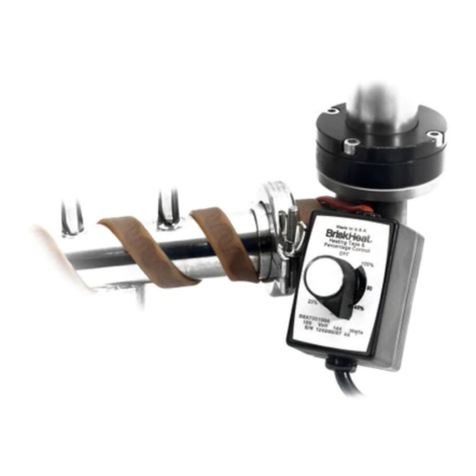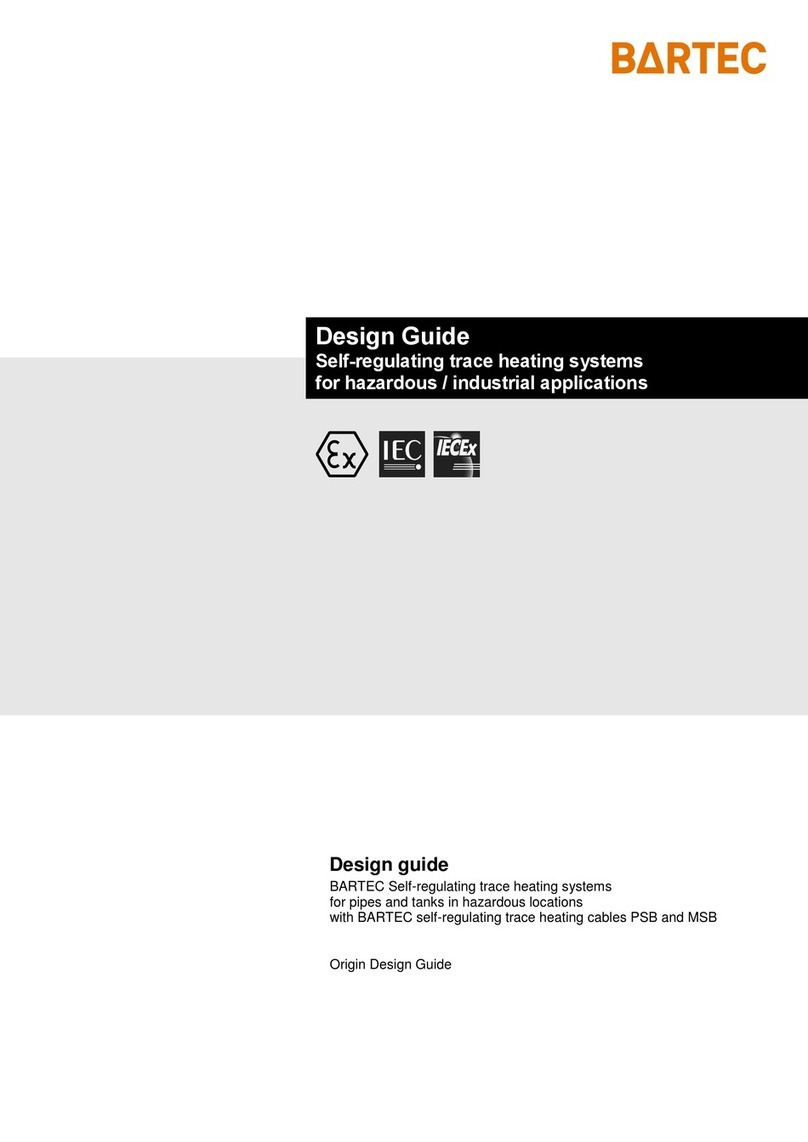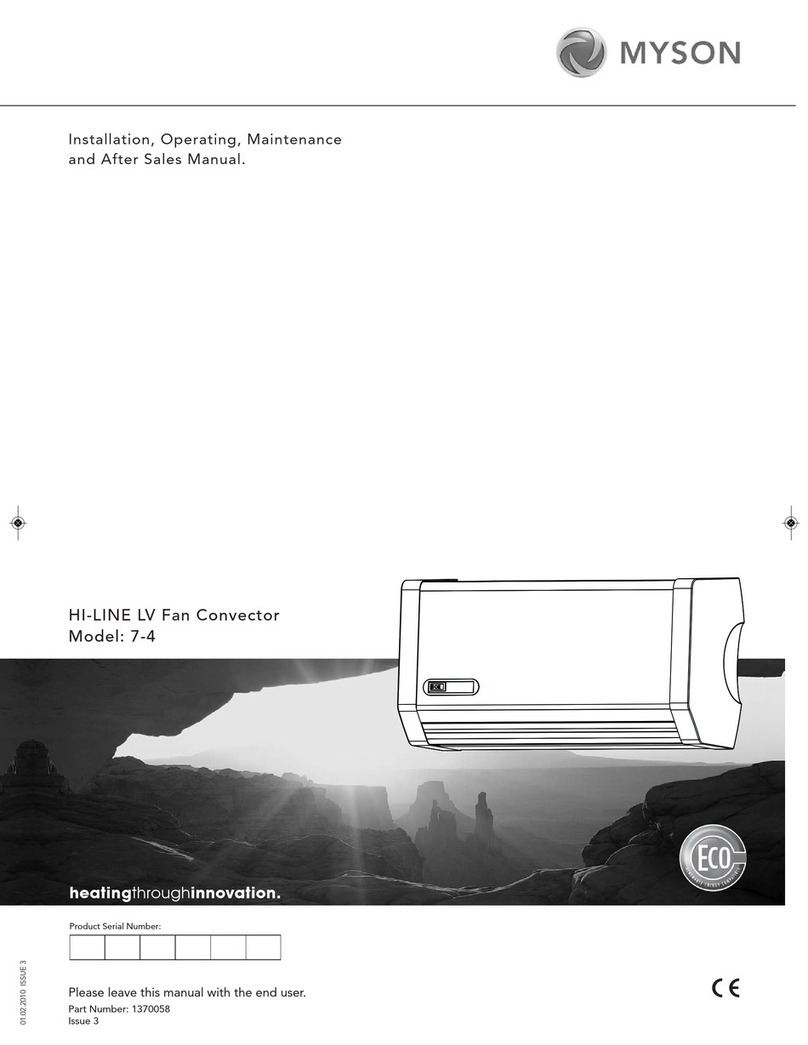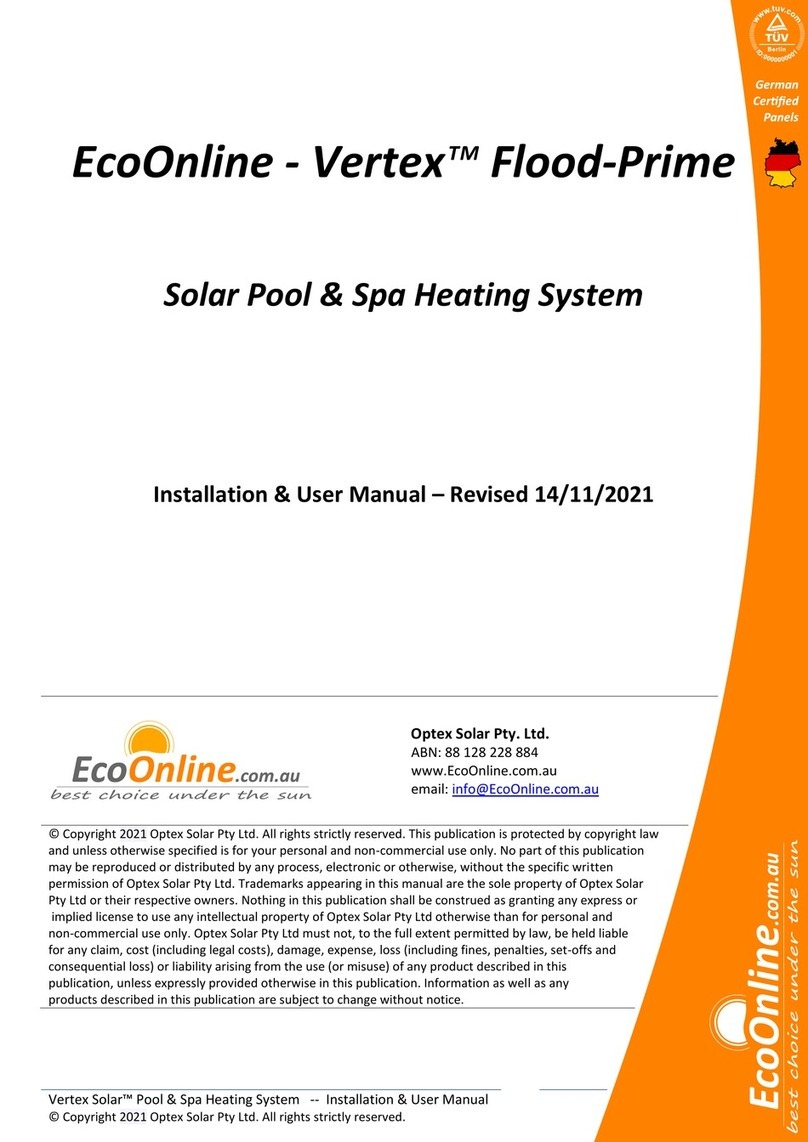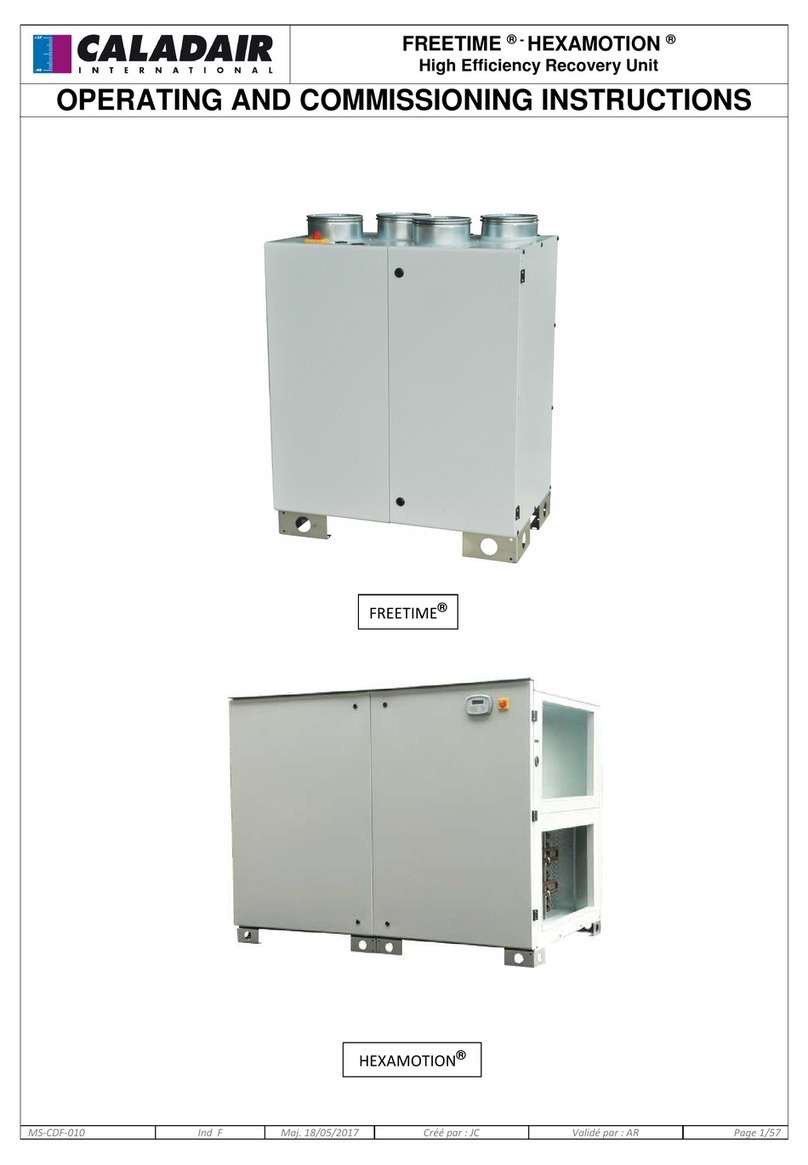Thermal Intelligence BASECAMP User manual

Page 2
BASECAMP OPERATOR MANUAL
Table of Contents
1. Introduction..............................................................................................................................................4
1.1 BASECAMP Identification:...................................................................................................................4
1.2 Contact Information:...........................................................................................................................5
2. Exterior Component Locations: ...............................................................................................................6
3. Interior Component Locations:................................................................................................................7
3.1 Passenger Side (Right):........................................................................................................................7
3.2 Drivers Side (Left):...............................................................................................................................8
4. Safety........................................................................................................................................................9
4.1 General Safety Information: ...............................................................................................................9
4.2 Operator Safety:..................................................................................................................................9
5. Transportation........................................................................................................................................10
5.1 Transportation Safety: ......................................................................................................................10
5.2 Towing with Vehicle:.........................................................................................................................10
5.3 Transport On Flat Bed:......................................................................................................................11
5.4 Vertical Lifting by Crane:...................................................................................................................11
6. Pre-Operation.........................................................................................................................................12
6.1 Daily Walk Around Inspection:..........................................................................................................12
6.2 Refueling Safety: ...............................................................................................................................12
7. Operating................................................................................................................................................13
7.1 Unit Start Up: ....................................................................................................................................13
7.2 Unit Start Up –Winter: .....................................................................................................................13
7.3 Heat Function:...................................................................................................................................13
7.4 Heater & Engine Shutdown: .............................................................................................................14
7.5 Generator Usage:..............................................................................................................................14
7.6 Light Tower: ......................................................................................................................................15
7.7 Connect Ducting:...............................................................................................................................16
7.8 Remote Probe: ..................................................................................................................................16
7.9 Beacon Light:.....................................................................................................................................16
8. Maintenance...........................................................................................................................................17
8.1 Maintenance Overview:....................................................................................................................17
8.2 Maintenance Safety:.........................................................................................................................17

Page 3
BASECAMP OPERATOR MANUAL
8.3 Engine Service Intervals ....................................................................................................................17
8.4 Maintenance Tasks: ..........................................................................................................................18
8.4.1 Change Engine Oil:......................................................................................................................18
8.4.2 Change Air Filters:.......................................................................................................................18
8.4.3 Change Fuel Filter:......................................................................................................................18
8.4.4 Fuel/Water Separator:................................................................................................................19
8.4.5 Priming the BASECAMP: .............................................................................................................19
8.4.6 Oil Filter: .....................................................................................................................................20
8.4.7 Adding Coolant & Coolant Check:...............................................................................................20
8.4.9 Engine Oil Check: ........................................................................................................................21
8.4.10 Battery Check:...........................................................................................................................21
8.4.11 Exhaust Heat Exchanger Check and Drain:...............................................................................22
8.4.12 Blower Belt Replacement: ........................................................................................................23
8.4.13 Blower Belt Tension:.................................................................................................................23
8.4.14 Light Tower Maintenance:........................................................................................................23
8.4.15 Light Tower Lens Adjustment:..................................................................................................23
9. Seasonal..................................................................................................................................................24
9.1 Off Season Maintenance: ..............................................................................................................24
9.2 Seasonal Checklist:.........................................................................................................................24
10. Recommended Filter & Fluids..............................................................................................................25
10.1 Filters: .............................................................................................................................................25
10.2 Fluids:..............................................................................................................................................25
11. Technical Specifications .......................................................................................................................26
12. Dimensions...........................................................................................................................................27
12.1 Front View:......................................................................................................................................27
12.2 Side View:........................................................................................................................................28
13. Tire & Rim Specifications .....................................................................................................................29
13.1 Rims:................................................................................................................................................29
13.2 Tires:................................................................................................................................................29

Page 4
BASECAMP OPERATOR MANUAL
1. Introduction
Welcome and thank you for being a customer of Thermal Intelligence! We are looking forward
to the success that BASECAMP will bring you and your worksite. Whatever you need we are
here to help –Thermal Intelligence prides itself on providing you with detailed technical
support for your BASECAMP.
Safe & efficient operation of BASECAMP requires that any individuals maintaining the unit read
and understand the information contained in this Operator's Manual.
The BASECAMP is intended to provide heat on outdoor worksites and in other outdoor
applications. Using the machine for any other purpose could permanently damage the machine
or seriously injure the operator or other persons on the work site. Machine damage caused by
misuse is not covered under warranty.
BASECAMP has been designed and built in accordance with the latest global safety standards
and its ultra efficient design been awarded the Green Seal Certification. BASECAMP has been
carefully engineered to eliminate hazards as best as possible, and to increase operator safety.
However, some risks may remain even after protective measures have been taken. On this
machine, they may include exposure to:
1. exhaust emissions
2. hot surfaces such as exhaust vents
3. fuel and fuel fumes when refueling
To protect yourself and others, thoroughly read and understand the safety information
presented in this manual before operating the machine.
1.1 BASECAMP Identification:
1. A decal listing the VIN & Serial Number is located on the electrical panel below the
breakers. For reference, record the serial number in the space provided below. You will
need the serial number when requesting parts or service.
Serial Number: ______________________________
Last Four Digits of VIN: ______________________________

Page 5
BASECAMP OPERATOR MANUAL
1.2 Contact Information:
1. By Phone: 1 (855) 554-4344
a. The main technical support phone line is staffed Monday-Friday 8:00 AM to 4:30 PM
MST excluding holidays.
2. After Hours Support:
a. Calls received outside of regular hours are directed to the On-Call Technician. After
hours support is reserved for issues that cannot wait until the next business day for
resolution. If no answer, please leave a message and we will get back to you as soon
as possible.
3. By Email: [email protected]
a. Feel free to email us at any time with technical questions or parts inquiries. Please
include the Serial Number of your BASECAMP if you have a specific question about
your machine so we can better help you.
b. If it is an emergency, please call 1 (855) 554-4344.
For additional troubleshooting, field support and maintenance videos visit our website:
https://thermalintelligence.com/support-content
Thermal Intelligence is committed to the continual development and improvement of new
products in industrial heating. We pride ourselves on providing you with the safest, most
efficient, and reliable source of Heat, Power, and Lights.

Page 6
BASECAMP OPERATOR MANUAL
2. Exterior Component Locations:

Page 7
BASECAMP OPERATOR MANUAL
3. Interior Component Locations:
3.1 Passenger Side (Right):

Page 8
BASECAMP OPERATOR MANUAL
3.2 Drivers Side (Left):

Page 9
BASECAMP OPERATOR MANUAL
4. Safety
4.1 General Safety Information:
1. It is required that anyone towing, operating, or maintaining this equipment read and
understand this manual.
2. This manual was written specifically for the safe operation and maintenance of this
equipment. Your safety and the safety of others depends on the proper and safe use of
this equipment.
3. Do not modify or alter this equipment or any of its components without the written
authorization from Thermal Intelligence.
4. Thermal Intelligence is constantly working to improve its products. We reserve the right
to make improvements or changes to subsequent models, with no obligation to make
these changes or addition to previous models.
5. Thermal Intelligence cannot anticipate every possible circumstance that might involve a
hazard. The warnings in this manual, and decals affixed to the unit are, therefore, not all
inclusive. If using a operating technique that the manufacturer does not specifically
recommend, verify that it is safe for others. Also make sure the procedure, work
method or operating technique utilized does not render the equipment unsafe.
4.2 Operator Safety:
1. The following safety items are for the safe operation of the unit. Failure to meet or
exceed any of the following safety procedures will result in damage to the heater and/or
property damage as well as serious injury or death.
a. Keep the area around the heater clear.
b. Never smoke when refueling.
c. The operator must wear approved personal
protective equipment (PPE) especially for the eyes,
ears, and hands.
d. Never remove safety guards, shields, or switches
when operating the heater.
e. During operations the unit can have extremely hot
surfaces. Be very careful not to touch heat transfer
surfaces, heat exchanger, engine, or
engine exhaust surfaces.
f. Always use caution around the rotating
shafts and engine. Loose clothing or hair
can be pulled into the shafts or engine
causing serious injury or death.

Page 10
BASECAMP OPERATOR MANUAL
5. Transportation
5.1 Transportation Safety:
1. Trailer Towing Can Be Hazardous:
a. BASECAMP is equipped with electronic trailer brakes. Allow for increased braking
distance due to weight.
b. Reduce speed under adverse weather, road, or terrain conditions.
c. Avoid sudden lane changes, U-turns etc.
d. Sudden maneuvers may cause tipping, rollover, jackknifing or sliding of the
trailer and without warning loss of control of the towing vehicle may result.
5.2 Towing with Vehicle:
1. Ensure that BASECAMP has been shut off, the breakers are all in the off position and the
Master Battery Connect Switch has been turned off (control panel should be off).
2. Open the engine compartment door on the same side as the input/output chutes and
make sure the fuel cap is properly secured.
3. Walk around the unit ensuring that side and rear jacks are all retracted and properly
secured as well as all doors are fully closed. Secure ducting on ducting posts.
4. Ensure that the light tower has been fully lowered.
5. Once the BASECAMP's hitch has been secured to the towing vehicle, remove all wheel
chocks, and place them back in the storage position.
6. Finally, attach the break away chains, emergency brake cable, and electrical cable, test
for brake and light function.
7. Inflate tires to 80 psi & check wheel lug nuts; Tighten to 80 ft-lb.
8. Towing Vehicle:
a. Check that the towing vehicle is rated to tow the load.
b. Check that the towing vehicle is in serviceable condition.
c. Do any necessary service/maintenance on the towing vehicle before towing.

Page 11
BASECAMP OPERATOR MANUAL
5.3 Transport On Flat Bed:
1. The unit can be lifted by a forklift from either side using the fork pockets.
2. Arrange the unit(s) on the flat bed, leaving enough room for movement between units,
especially the overhead lights if transporting multiple BASECAMP units.
a. Make sure overhead lights are secure within the bracket prior to loading.
3. Secure the unit to the flatbed using the chains through fork pockets, and the front D-
ring
4. Safety clips for the ducting should be on, all doors are latched, light mast in its
downright resting position.
5.4 Vertical Lifting by Crane:
1. The lifting eye lugs are made only for vertical lifting. DO NOT transport with a crane.
2. Use a four-point sling with the lifting eye lugs.
3. Attach a sling to all (4) lifting eye lugs or the unit may rotate freely. A freely spinning
load poses a danger to equipment and people involved. If a lift requires a unit to rotate,
be sure to use a tagline.
a. Extra care must be used in environments with power lines near or overhead as
the tagline will conduct electricity.
4. Lifts should be completed slowly and gradually.

Page 12
BASECAMP OPERATOR MANUAL
6. Pre-Operation
6.1 Daily Walk Around Inspection:
1. Look for conditions that could hinder performance or safety, such as oil, coolant, fuel
leakage, blocked vents, loose or missing hardware and electrical connections.
2. Verify the V-belt is properly seated in the pulley grooves.
3. Coolant levels should be checked daily.
4. Check electrical battery, connectors, and ground points.
5. Check flexible rubber hoses for deterioration.
6. Check hoses are not twisted, crushed, or kinked.
7. Check there are no cracks or corrosion.
6.2 Refueling Safety:
1. Clean up any spilled fuel immediately.
2. Refill the fuel tank in a well-ventilated area.
3. Replace the fuel tank cap after refueling.
4. Do not smoke.
5. Do not refuel a hot or running engine.
6. Do not refuel the engine near sparks or open flames.

Page 13
BASECAMP OPERATOR MANUAL
7. Operating
7.1 Unit Start Up:
1. Ensure heater is level and wheel chocks are
placed under the wheels for stability.
2. Remove both port covers from the inlet/outlet
chutes.
3. Turn the Master Battery Disconnect to the on
position, the control panel will go through a
booting sequence before taking you to the main
screen.
4. If no alarms are present, press the “Stop/Start”
button on the unit. After a glow plug
countdown, the unit will start up.
a. If it is cold outside the unit may go through a pre-warming phase before saying
“Full Operation” at the bottom of the screen.
7.2 Unit Start Up –Winter:
1. In temperatures below freezing, diesel fuel will coagulate and cause problems with
starting the machine. The engine will require preheating. Preheating can be achieved
using the installed 120V block heater or by using a heater or other heat source indoors.
a. In temperatures between 32°F (0°C) and -58°F (-50°C) the machine should be
preheated using the block heater. Plug the block heater into a 120V outlet. Let
the engine warm for 2.5 hours minimum.
b. After preheating, the machine can be started normally.
7.3 Heat Function:
1. Once the control panel says “Full Operation”, users can turn
on the main breaker and then press the "Heat On/Off" button.
a. The default heat setpoint is 80°C or 176°F.
b. Users can choose to set the temperature as high as
100°C or 212°F.
2. The BASECAMP will ramp up engine load to attempt to hit
your desired output temperature. Keep in mind that the
BASECAMP does a 100°C or 180°F temperature rise over
ambient.
a. If users want more specific temperature control in their space, then we
recommend using a BASECAMP remote probe.

Page 14
BASECAMP OPERATOR MANUAL
7.4 Heater & Engine Shutdown:
1. Do not use the Emergency Stop to turn off the machine.
2. Press the “Heat On/Off” button to disengage the heat.
3. Shut of all the breakers including the upper red main breaker.
4. Press “Stop/Start” button to stop the engine. Allow the engine to cool down, you will
see a timer and message stating, “Cool Down”. Once the cooldown period has ended,
see the next step.
5. Turn the Master Battery Switch to the “Off” position to shut down the control panel and
avoid any unnecessary battery drain.
7.5 Generator Usage:
1. BASECAMP provides 27KW of continuous power.
2. Once the BASECAMP is running and at full operation, users may turn on the Main
Breaker to access the power distribution.
3. Simply match your required power with the outlet label on the BASECAMP, plug into the
socket and turn on the corresponding breaker.
4. The unit will automatically and instantly divert power from heat generation (if in use)
and provides electricity as necessary.
5. If heat is engaged and the BASECAMP has not reached the desired setpoint, all
remaining power is directed at the heating elements to ensure that unit remains under
a full heat generation load.
a. Having the BASECAMP lights turned on does not negatively affect the available
power generation.
6. Utilizing all 27 KW of available power distribution will result in the heater temperature
rise operating at 60% of its normal peak capability. Air flow is not affected.
a. Using air recirculation in this scenario is recommended.

Page 15
BASECAMP OPERATOR MANUAL
7.6 Light Tower:
1. The BASECAMP is equipped with (3) 480-watt LED lights providing 192,000 Lumens.
2. The breaker switches for the lights can be turned on once the BASECAMP is running and
the main breaker is turned to the on position.
3. On the second screen of the control panel users have further control with the ability to
turn the lights to AUTO mode where lights will turn on 2 hours before dusk and turn off
2 hours after dawn.
4. Prior to extending the light mast, first extend the side outriggers and securely extend all
four jacks for stability.
5. The up/down switch is used to raise the light mast to the
desired height or until the upper limit switch is tripped
and the mast extends no further. Do not solely rely on
the upper limit switch.
6. When lowering the light mast, you must stop when the
winch cable is loose.
7. The light mast can be raised and lowered on the battery;
however, Thermal Intelligence recommends having the
unit running during mast operation to eliminate
unnecessary battery drain.
8. BASECAMP must be transported with the light mast in
the fully lowered position.

Page 16
BASECAMP OPERATOR MANUAL
7.7 Connect Ducting:
1. If using a coil style duct, bunch up as much of the duct as possible
before securing the clamp. This will ensure an airtight seal and
maximum air flow down the duct.
2. If using a soft cuff style duct, then simply secure using the included
buckle and tighten prior to securing the ducting clamps.
3. It is recommended that ducting is secured prior to turning on the
BASECAMP as it is easier to work while no air is flowing, however, if
not practical hook up ducting while the unit is running.
4. The high static pressure of the BASECAMP means it can push air a
long distance. To ensure that as much air gets to the destination as
possible, always confirm that ducting connections are fully secure.
5. When using a ducting splitter, it is again recommended that
connections are made while the BASECAMP is off. Always place the
output duct inside the splitter as to not impede airflow.
6. Once the air is flowing, check to make sure the splitter is properly
open to allow for equal air flow.
7. If hooking up more than one splitter and wanting to have equal air
flow at all output points it is necessary to restrict air at the first and second outlets by
closing the opening to less than 12".
7.8 Remote Probe:
1. Plug the Remote Probe into any 120V outlet within 50' of BASECAMP. Place away from
metal structures for better signal strength.
2. The screen will update with the Probe temperature & controls once properly connected.
3. Select the desired Probe temperature on the screen based on the heating requirements
of the Probe location.
4. Unplug the Probe to return to output temperature setpoint options.
7.9 Beacon Light:
1. BASECAMP is equipped with a tri-colour beacon that indicates the operating status of
the heater:
a. The green light turns on whenever the engine is running.
b. The yellow light turns on whenever there’s a fault which doesn’t shut down the
machine. Example: Fuel level dips below 20% or Air Filter Restriction.
c. The red light turns on if there is a critical error, which shuts the heater down.

Page 17
BASECAMP OPERATOR MANUAL
8. Maintenance
8.1 Maintenance Overview:
1. Top level maintenance is provided in this section. For detailed engine maintenance
procedures please refer to the Engine Owners Manual.
8.2 Maintenance Safety:
1. The following safety items are to protect the operator and heater during maintenance.
Failure to meet or exceed any of the following safety procedures will result in damage to
the heater, towing vehicle, other vehicles, property damage as well as serious injury or
death.
a. Place wheel chocks in front and behind the heater wheels to prevent accidental
movement during maintenance.
b. The area around the heater must be cleared of all unauthorized personnel.
c. Wear approved protective clothing and
safety glasses.
i. No loose clothing. No loose or
hanging jewelry. Long hair must
be secured.
d. Never weld on the heater unless
approved by Thermal Intelligence.
e. Do not replace any parts or tires except for parts from Thermal Intelligence or
tires with the same rating as the original equipment and meet the specifications.
f. Always use the correct tools when performing repairs or routine maintenance.
i. Using improper or inadequate tools can cause damage to the heater or
injury to the operator.
8.3 Engine Service Intervals
1. Long Run Tank: 2,500 Hours
2. Non –Long Run Tank:
a. Change oil after the initial 50 hours of operations and every 400 hours thereafter
b. Refer to Engine Owners Manual

Page 18
BASECAMP OPERATOR MANUAL
8.4 Maintenance Tasks:
8.4.1 Change Engine Oil:
1. Place container under drain port or connect hose to drain port leading to
container.
2. Remove plug from oil drain.
3. Open drain valve to drain.
4. Drain the oil immediately to be sure all the oil and suspended contaminants are
removed from the engine.
5. Close drain valve once completed.
8.4.2 Change Air Filters:
1. Replace air filters every 2,500 hours. Depending on running conditions filters
may need to be changed earlier.
2. Lift the clamps to open the housing.
3. Replace inner and outer filters if heavily soiled.
a. Write current engine hours on filters when replacing.
4. Replace the housing and reattach the clamps.
8.4.3 Change Fuel Filter:
1. Remove the spin-on fuel filter with a filter wrench, collect escaping fuel.
2. Install:
a. Do not pre-fill. The fuel filter can result in debris entering the fuel system and
damaging fuel system components. Lubricate the O-ring seal with a small
amount of diesel.
b. Install the filter on the filter head.
i. Write current engine hours on filter when replacing
c. Tighten the filter until the gasket contacts the filter head surface.
d. Tighten the fuel filter an additional ¾ turn after contact, or consult the filter
manufacturer instructions.
e. Prime fuel system after filter installation.
f. WARNING:
i. The fuel pump high-pressure fuel lines and fuel rail contain very high-
pressure fuel.
ii. Never loosen any fittings while the engine is running. Personal injury
and property damage can result.
iii. Operate the engine and check for leaks.

Page 19
BASECAMP OPERATOR MANUAL
8.4.4 Fuel/Water Separator:
1. Draining Water (regularly check for water in base container and drain as
necessary):
a. Shut down engine.
b. Place suitable container underneath.
c. Loosen drain plug.
d. Drain until pure fuel runs out.
e. Tighten drain plug.
2. Changing the Pre-filter insert:
a. Shut down engine.
b. Place suitable container underneath.
c. Loosen drain plug and drain liquid.
d. Disassemble filter insert.
e. Clean any dirt off the sealing surfaces.
f. Wet the sealing surfaces of the filter cartridge with fuel and
screw back on to the filter head, clockwise.
g. Tighten drain plug.
h. Prime the fuel system. See “Priming the BASECAMP”below.
8.4.5 Priming the BASECAMP:
1. The filter primer pump is located above the fuel water separator on the Control
Panel side of the BASECAMP.
2. First, press the Primer pump several times until it becomes too hard to press in.
Cycle the BASECAMP power on and off using the main battery disconnect then
press the start button. If the unit still doesn't start, then re-press the primer
pump until it is hard then continue to press the pump button while the starter is
turning over.
3. If BASECAMP still doesn't start you may have an air-locked fuel line or a fuel leak.
If no leaks present, using a 10mm wrench open the fuel line bleed screw located
on the fuel filter (not on the water separator) and see if any diesel fuel comes
out.
a. If no fuel comes out, then press the primer pump until you see diesel
come out of the bleed screw (be sure to have a soaker pad underneath
the screw to catch any diesel).
b. Once diesel comes out of the screw, tighten it back up and press the
primer pump until it becomes hard.
4. Try re-starting the engine. If there was air in the lines this process may need to
be completed several times. If the BASECAMP still does not start and there are
no other codes on the control panel, contact Thermal Intelligence.

Page 20
BASECAMP OPERATOR MANUAL
8.4.6 Oil Filter:
1. Remove:
a. Clean the area around the oil filter head.
b. Use an oil filter wrench to remove the filter.
c. Clean the gasket surface of the filter head.
i. The O-ring can stick on the filter head. Be sure it is removed before
installing the new filter.
2. Install:
a. Use clean oil to coat the gasket surface of the filter.
b. Apply a light film of lubricating oil to the gasket sealing surface before
installing the filter.
i. Be careful that no debris is poured into the filter. If using an oil supply
with a metallic or plastic seal under the cap, be careful to peel the
seal back. Punching the seal with a knife or sharp object can create
debris in the oil container.
c. Mechanical overtightening of the filter can distort the threads or damage the
filter sealing element seal. Install the filter on the oil filter head. Tighten the
filter until the gasket contacts the filter head surface. Tighten ¾ turn after
the gasket contacts the filter head.
8.4.7 Adding Coolant & Coolant Check:
1. If coolant level is below the filler neck, coolant must be added.
a. Verify engine is stopped and cooled.
b. Remove radiator cap.
c. Fill radiator slowly with coolant until it comes up to the
filler neck.
d. Coolant can be added from above inside the enclosure
or from the roof access panel.
e. Operate engine approximately five minutes to bleed the air in the coolant
circuit.
f. Coolant level will drop.
g. Stop the engine and once cooled, there should be approximately 1” of
coolant in the reserve tank.
Table of contents
Popular Heating System manuals by other brands
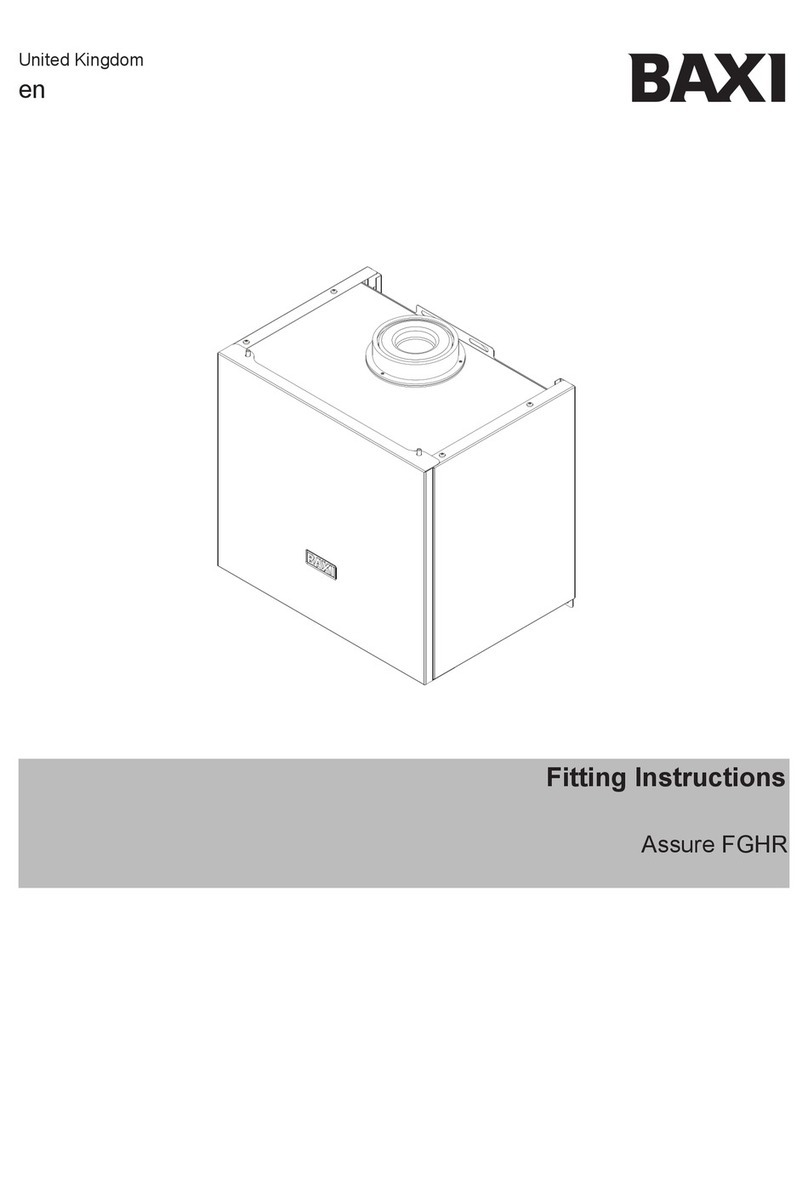
Baxi
Baxi Assure FGHR Fitting instructions
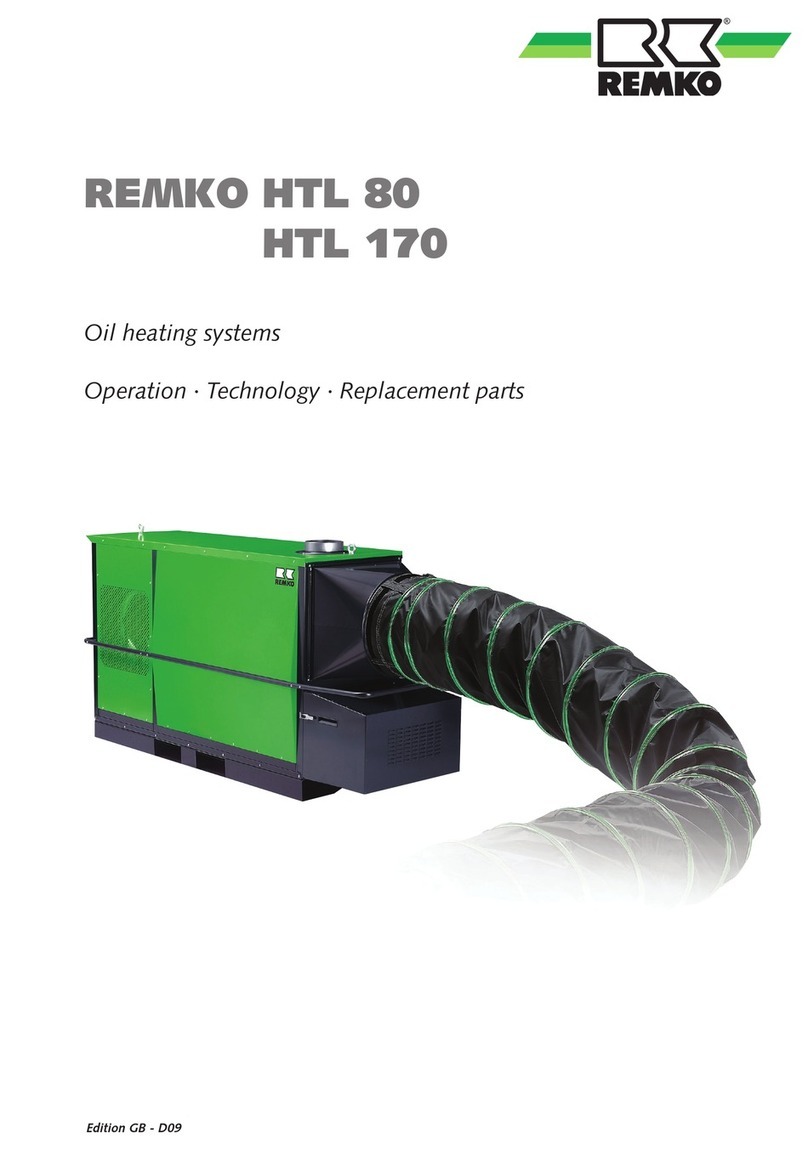
REMKO
REMKO HTL 80 Operation,technology,spare parts
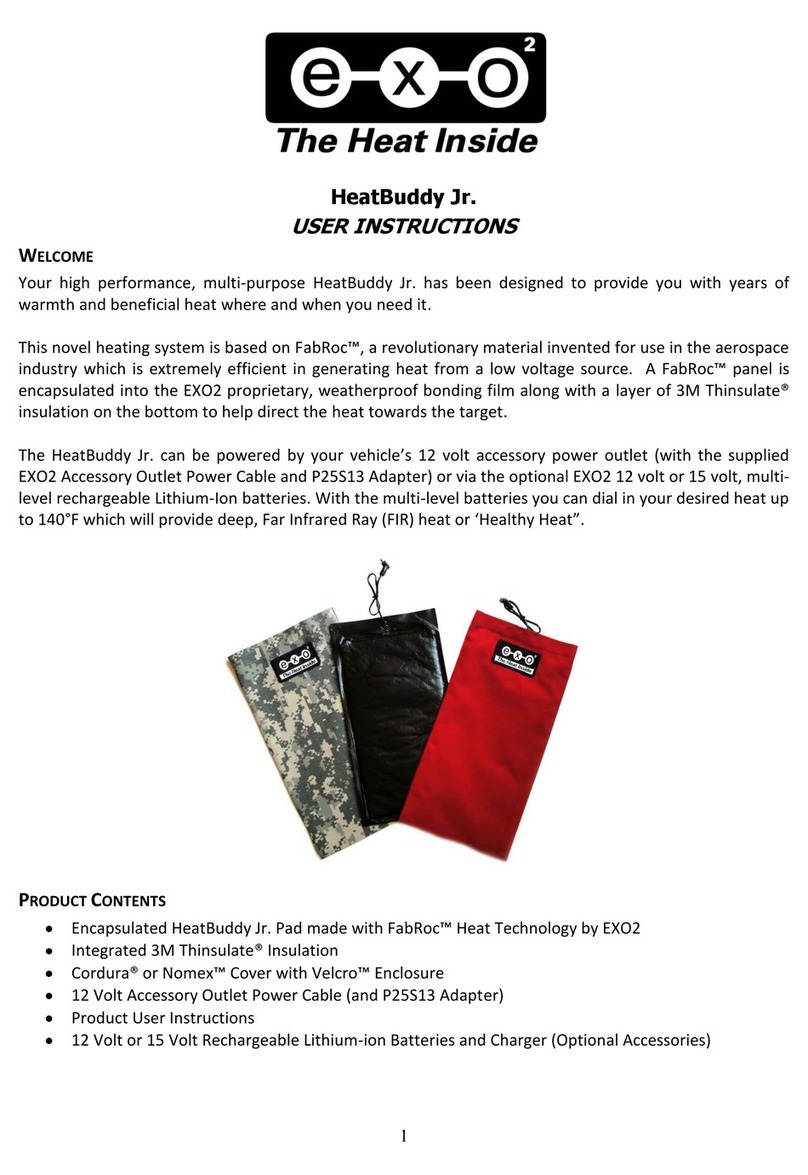
EXO2
EXO2 HeatBuddy Jr User instructions
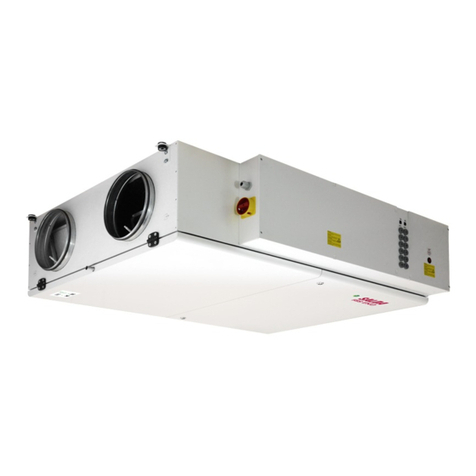
Salda
Salda RIS 400 P EKO 3.0 Series MOUNTING AND INSTALLATION INSTRUCTION
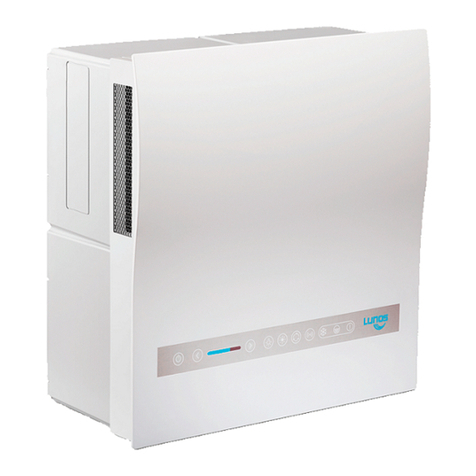
Lunos
Lunos Nexxt installation manual
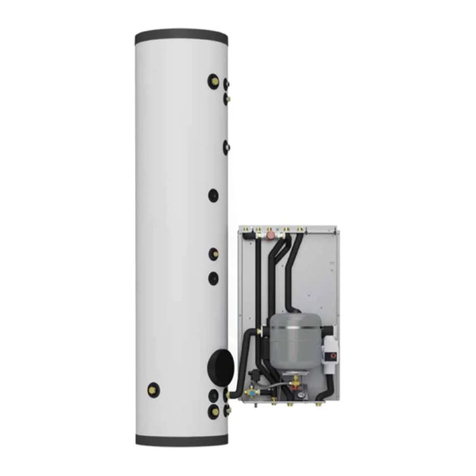
Immergas
Immergas SUPER TRIO Instructions Booklet and warnings

flamco
flamco Flexcon P Installation and operating instructions
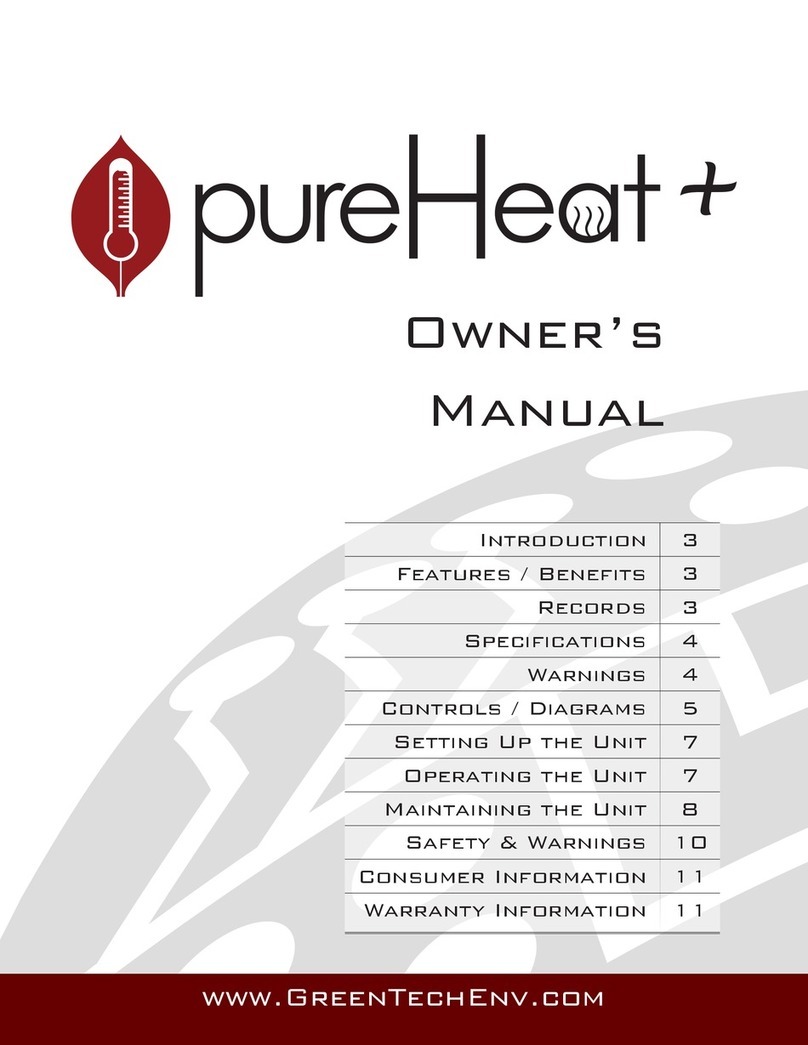
GreenTech
GreenTech pureHeat+ owner's manual

BoilerMag
BoilerMag BM22 Installation & servicing instructions

Vallox
Vallox DIGIT2 SE VKL Instructions for use and maintenance
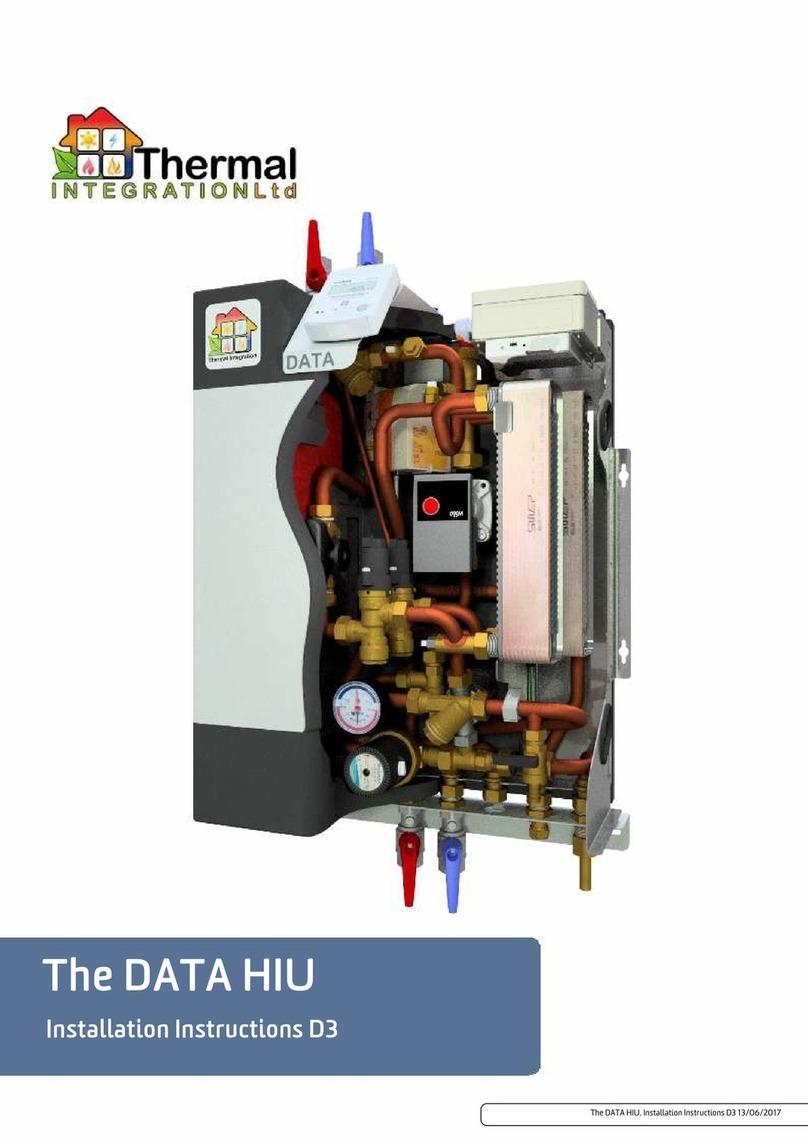
THERMAL INTEGRATION
THERMAL INTEGRATION DATA installation instructions
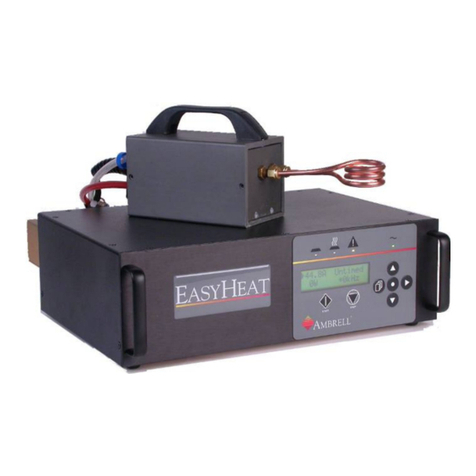
Ambrell
Ambrell EasyHeat 0112 Technical handbook

